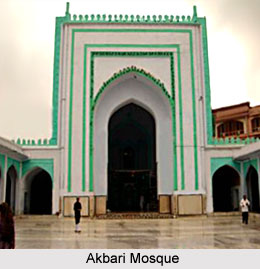 Monuments in Rajmahal mainly comprises of the famous architectural wonders of the Muslims. The city of Rajmahal is a notified region in the district of Sahibganj in the Jharkhand state. This historical city is located on the western banks of the River Ganges amidst the hills called Daman-i-Khoh at the time of the Muslim rule.
Monuments in Rajmahal mainly comprises of the famous architectural wonders of the Muslims. The city of Rajmahal is a notified region in the district of Sahibganj in the Jharkhand state. This historical city is located on the western banks of the River Ganges amidst the hills called Daman-i-Khoh at the time of the Muslim rule.
Rajmahal is situated to the right bank of the Ganga River, at a distance of about twenty four miles from English Bazaar. It possesses extensive ruins of an old Muslim city buried in the jungle, about four miles to the west of the modern town. Man Singh, the famous Rajput general of Akbar, chose Rajmahal as the capital of Bengal in the year 1592 owing to its strategic location. The scat of government was moved to Dacca in the year 1607, but it returned here again under Sultan Shuja in the year 1639. After the movement of the capital to Murshidabad in the year 1707, the town fell into decay.
The prominent monuments in Rajmahal are the Jami Masjid of Man Singh and the Tomb of Miran, the son of Mir Jafar, who killed Siraj-Ud-Daulah and was himself struck by lightning. The ruins of the old palace of Sultan Shuja, son of Shah Jahan and local governor, can be seen. The Sangi Dalan or Hall of Stone belonging to the mid-seventeenth century is the largest surviving fragment. Close to the Maina Tank is a massive brick edifice with Arabic inscriptions. At a distance of about ninety two meters to the south is the Akbari Mosque, once used as a British dispensary.
The road to the Hadaf, about four miles to the north-west, passes the Tanksal or Mint. The entrance to the Hadaf is by the eastern gateway. The mosque has a facade which is 200 ft long with seven arches of 22 ft height. In the centre of the quadrangle is a tank. On the road from Sahibganj to Rajmahal, close to the Jami Mosque, is a Mughal-period bridge in brick and stone still in use today. It has fine, massive diamond-shaped piers carrying six arches with two circular bastions at each end.
Other notable structures include the Choti Mosque; a rectangular, three-bay structure with a single dome, an old ruined hammam near the Akbari Mosque; a fine octagonal 17th century tomb at Begampur, and the well-preserved Junima Mosque, which has a fine carved slab of black basalt in the threshold of the central bay. The Sangi Dalan is situated on the bank of the river, which was a division of place of Shah Shuja, Shah Jahan`s son, in 1556 to allow Akbar to pray. The city of Rajmahal was established by Raja Man Singh. The style of construction of Rajmahal is a mixture of the Bengal and the Imperial style.



















